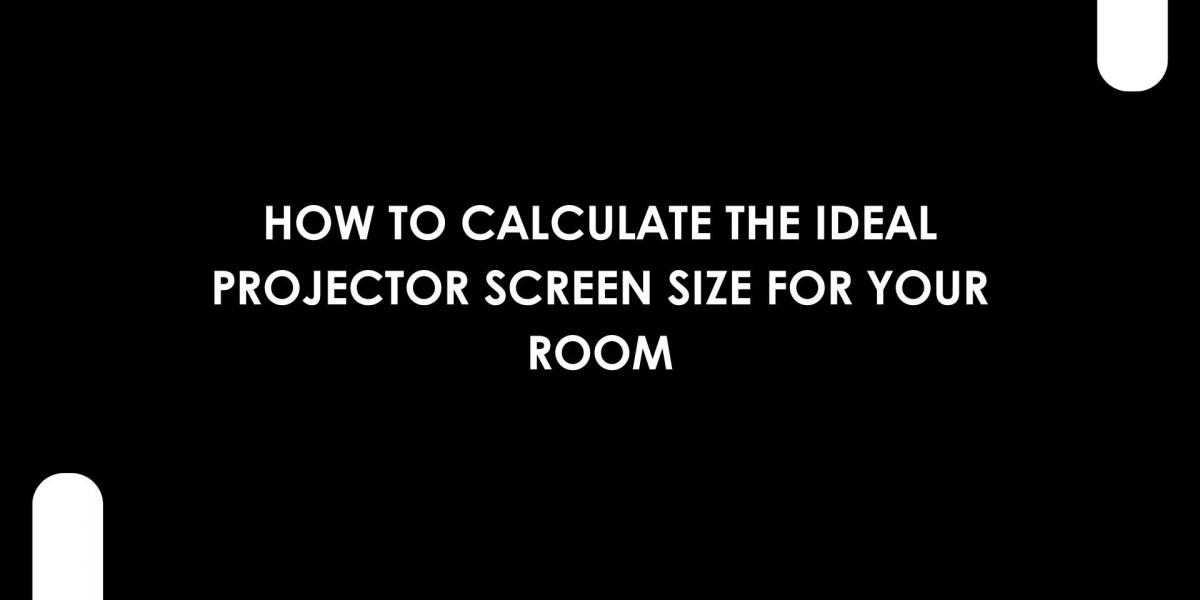XTEN-AV is known for simplifying AV design and installation with advanced tools and smart project planning. One of the most common questions that arises during a home theater or meeting room setup is how to calculate the ideal projector screen size for the space. Selecting the right screen size ensures a comfortable viewing experience without straining your eyes or losing image clarity.
In this guide, we will walk you through the steps, formulas, and factors to determine the perfect projector screen size for your room.
Why Screen Size Matters
The projector screen is the focal point of your setup. Whether you are creating a home cinema, designing a conference room, or setting up a classroom presentation system, the wrong size can cause viewing discomfort. A screen that is too small makes the visuals underwhelming, while one that is too large may cause image distortion or require uncomfortable head movements to follow the action.
Getting it right means balancing distance, resolution, and room layout for the best possible experience.
Step 1. Measure Your Room
Before you start using a screen size calculator, measure the key dimensions of your room. You will need:
Room length – The total distance from the projector wall to the back wall.
Ceiling height – Important for deciding mounting height and avoiding obstructions.
Seating distance – How far viewers will sit from the screen.
These measurements will determine the maximum screen size you can comfortably use.
Step 2. Understand the Viewing Distance Rule
A widely accepted guideline is that the ideal viewing distance should be between 1.5 to 2.5 times the screen’s diagonal size. This means if you have a 100-inch screen, your seating should be between 12.5 feet and 20 feet away for optimal viewing.
For 4K projectors, you can sit closer without seeing pixelation. For 1080p projectors, sitting too close can make pixels more visible, reducing image quality.
Step 3. Choose Your Aspect Ratio
The aspect ratio determines the shape of your screen and how content will appear. Common ratios include:
16:9 – Standard for home theaters, gaming, and streaming content.
21:9 – CinemaScope widescreen, perfect for movie lovers.
4:3 – Mostly used for presentations or older video formats.
Your choice will depend on the type of content you watch most. A mismatched aspect ratio can result in black bars on the top or sides of the image.
Step 4. Use a Screen Size Calculator
To simplify the process, use a screen size calculator. These tools allow you to enter your seating distance, room size, and projector type to get a recommended screen size. XTEN-AV offers professional AV design tools that include this function, making it easy for integrators and homeowners to select the right size.
For example, if your seating distance is 10 feet and you are using a 16:9 screen, a calculator might recommend a screen between 92 inches and 110 inches for balanced viewing comfort.
Step 5. Factor in Projector Throw Distance
The throw distance is the space between your projector and the screen. Each projector has a throw ratio that determines the image size it can produce at a given distance.
Throw Ratio Formula:
Throw Ratio = Throw Distance ÷ Image Width
If your projector has a throw ratio of 1.5 and your screen is 87 inches wide (about 100 inches diagonal), you will need to place the projector 130 inches (10.8 feet) away from the screen.
Step 6. Consider Room Lighting
Ambient light in your room can affect how large your screen should be. In bright rooms, a larger screen may appear washed out unless you have a high-brightness projector. In darker rooms, you can go for a larger size without losing contrast.
If you cannot control light levels, consider using an ALR (Ambient Light Rejecting) screen to maintain image quality.
Step 7. Account for Multiple Rows of Seating
If your room has more than one row of seating, calculate the viewing angle for the farthest row. The Society of Motion Picture and Television Engineers (SMPTE) recommends a minimum viewing angle of 30 degrees for an immersive experience.
Using this standard ensures that even viewers at the back can see details clearly without feeling too far from the action.
Step 8. Test Before Installing
Before mounting your screen, test the size with a projected image on the wall. This allows you to confirm if the chosen dimensions feel comfortable from your seating position. Adjust the projected area until you find the sweet spot between immersion and comfort.
Example Calculation
Let’s say you have:
Room length: 16 feet
Seating distance: 12 feet
Projector: 16:9, 1080p, throw ratio 1.6
Preferred viewing angle: 36 degrees
Using a screen size calculator, you find that a 110-inch diagonal screen offers a good balance for your space. The image width will be 96 inches, and with a throw ratio of 1.6, the projector should be placed about 12.8 feet from the screen.
Pro Tips for Selecting Screen Size
Don’t fill the entire wall – Leave space around the screen for speakers, decor, or acoustic panels.
Prioritize image quality over size – Bigger is not always better if it means losing sharpness or contrast.
Think about future upgrades – If you plan to switch to a 4K or laser projector later, you might be able to enjoy a larger screen.
Account for screen type – Fixed-frame, motorized, and pull-down screens all require different installation clearances.
Final Thoughts
Choosing the right projector screen size is both a science and an art. While calculators, formulas, and guidelines can get you close to the ideal size, personal comfort should be the deciding factor. By considering seating distance, aspect ratio, throw distance, and lighting conditions, you can create a setup that delivers an outstanding viewing experience every time.
With XTEN-AV’s advanced design tools, including a professional-grade screen size calculator, you can take the guesswork out of the process and design a projection setup that perfectly fits your room. Whether you are building a home theater or a professional presentation space, the right screen size makes all the difference in bringing your visuals to life.
Read more: https://avtechsolutions.wixsite.com/avsolutions/post/best-tv-screen-size-calculators-online-compared








